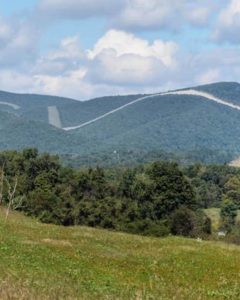Search this site for previous lively discussions of “sue and settle.” Here is the latest attempt to stop it. In September, the Interior Department extended EPA’s recent restrictions on litigation settlement agreements to the rest of the Department.
Here’s someone’s perception of the problem. Basically, there is rampant secret collusion between environmental groups and the government, which leads to substantive regulatory changes that “cost the economy billions of dollars and thousands of jobs, without Congressional approval.” Actually it is the laws passed by Congress that say the regulations must be produced that would have any impact, not the lawsuit forcing compliance with the law.
And here is another fact:
A legal analysis published by lawyer Ben Tyson in the Virginia Law Review, for example, looked at 79 settlements brokered between environmental groups and the Obama administration, and found that all but four of the agreements involved setting deadlines for compliance.
According to this article (which also provides an example of how this policy has worked in one case):
The Trump administration says the new rules are necessary to prevent government agencies from colluding with environmental groups to reach settlements that favor their interests. But critics say these rules only delay the implementation of federal laws designed to protect the environment, leaving ecosystems and wildlife vulnerable while agencies drag their feet.”
Though regulated industries and administration officials denounce lawsuit-happy environmental groups, the rhetoric surrounding sue and settle typically disregards the fact that agencies choose to settle because, as Bernhardt puts it in his order, “the Department is likely to lose.” According to a letter from 60 former federal attorneys criticizing the new EPA policy, “It is EPA’s failure to comply with legal requirements that is the problem, not the people who sue EPA.”
I’ve not seen evidence of “colluding with environmental groups.” Unless that includes DOJ evaluating the case and admitting it’s a loser. (Focusing on environmental groups also ignores the fact that settlements also benefit the Pacific Legal Foundation when it sues over ESA DE-listing requirements, and then there’s those regulations that a new administration would rather settle out of than defend.)
I’m a big fan of transparency, and I’m not sure what would justify not disclosing the terms of a settlement. As for public comments, I doubt if there would be a lot of interest in whether a legal deadline was missed or not.
However, the actual intent may be for this to “prolong the settlement process,” and thereby reduce the number of lawsuits that budget-limited plaintiffs can afford to bring. But it could just as likely mean that plaintiffs would rather avoid the new process and spend their time in court, and a judge will have to decide more cases, which will almost always be against the government, and the government will have to pay even more money in legal fees (there are also new incentives to litigate the legal fees, which could lead to even more of them).


